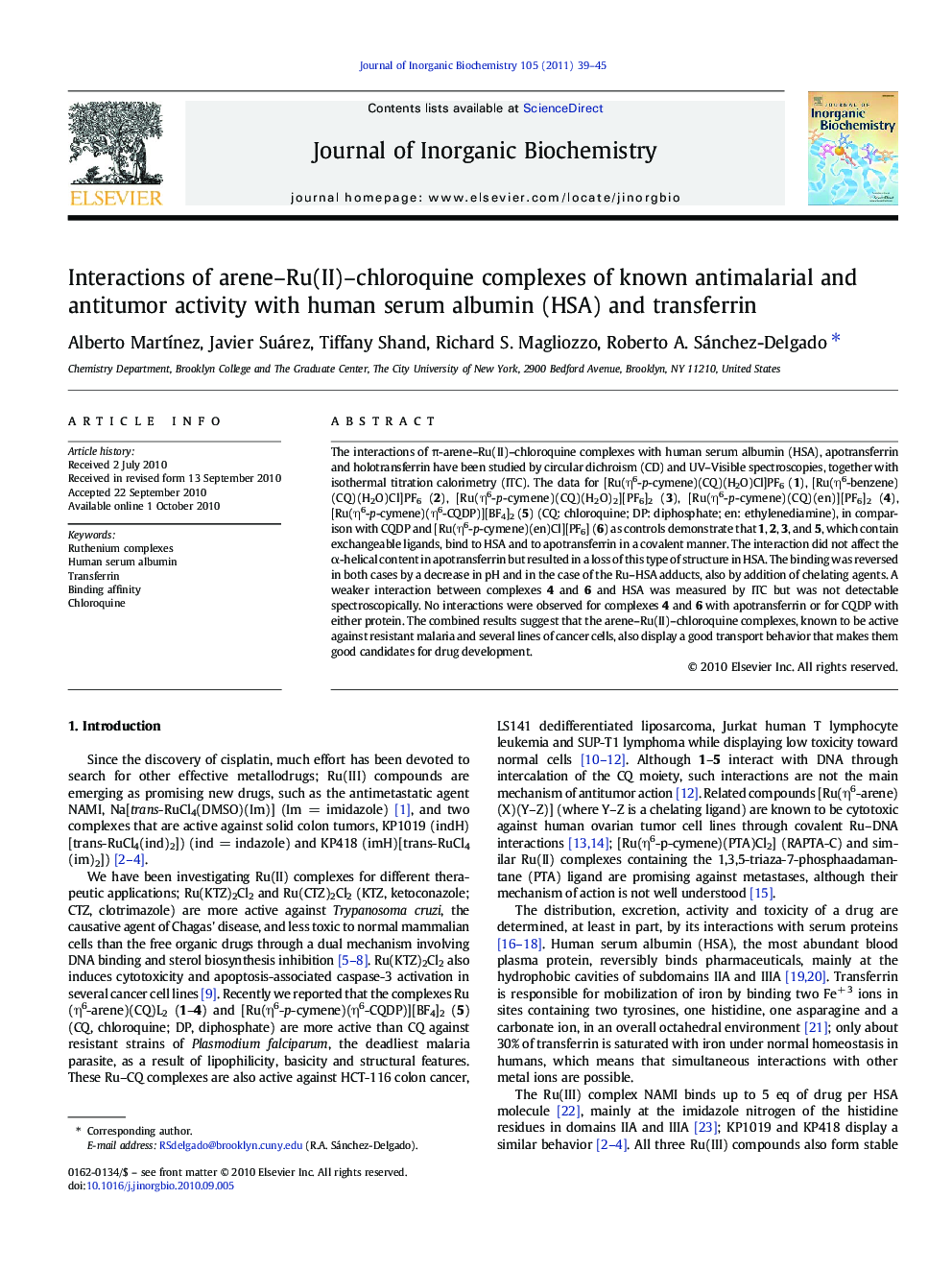| کد مقاله | کد نشریه | سال انتشار | مقاله انگلیسی | نسخه تمام متن |
|---|---|---|---|---|
| 1316324 | 976448 | 2011 | 7 صفحه PDF | دانلود رایگان |

The interactions of π-arene–Ru(II)–chloroquine complexes with human serum albumin (HSA), apotransferrin and holotransferrin have been studied by circular dichroism (CD) and UV–Visible spectroscopies, together with isothermal titration calorimetry (ITC). The data for [Ru(η6-p-cymene)(CQ)(H2O)Cl]PF6 (1), [Ru(η6-benzene)(CQ)(H2O)Cl]PF6 (2), [Ru(η6-p-cymene)(CQ)(H2O)2][PF6]2 (3), [Ru(η6-p-cymene)(CQ)(en)][PF6]2 (4), [Ru(η6-p-cymene)(η6-CQDP)][BF4]2 (5) (CQ: chloroquine; DP: diphosphate; en: ethylenediamine), in comparison with CQDP and [Ru(η6-p-cymene)(en)Cl][PF6] (6) as controls demonstrate that 1, 2, 3, and 5, which contain exchangeable ligands, bind to HSA and to apotransferrin in a covalent manner. The interaction did not affect the α-helical content in apotransferrin but resulted in a loss of this type of structure in HSA. The binding was reversed in both cases by a decrease in pH and in the case of the Ru–HSA adducts, also by addition of chelating agents. A weaker interaction between complexes 4 and 6 and HSA was measured by ITC but was not detectable spectroscopically. No interactions were observed for complexes 4 and 6 with apotransferrin or for CQDP with either protein. The combined results suggest that the arene–Ru(II)–chloroquine complexes, known to be active against resistant malaria and several lines of cancer cells, also display a good transport behavior that makes them good candidates for drug development.
Graphical Absractπ-Arene–Ru–chloroquine complexes bind reversibly to HSA and to apotransferrin in a covalent manner. These complexes, which are active against resistant malaria and several lines of cancer cells, display a potential good transport behavior that makes them good candidates for drug development.Figure optionsDownload as PowerPoint slide
Journal: Journal of Inorganic Biochemistry - Volume 105, Issue 1, January 2011, Pages 39–45